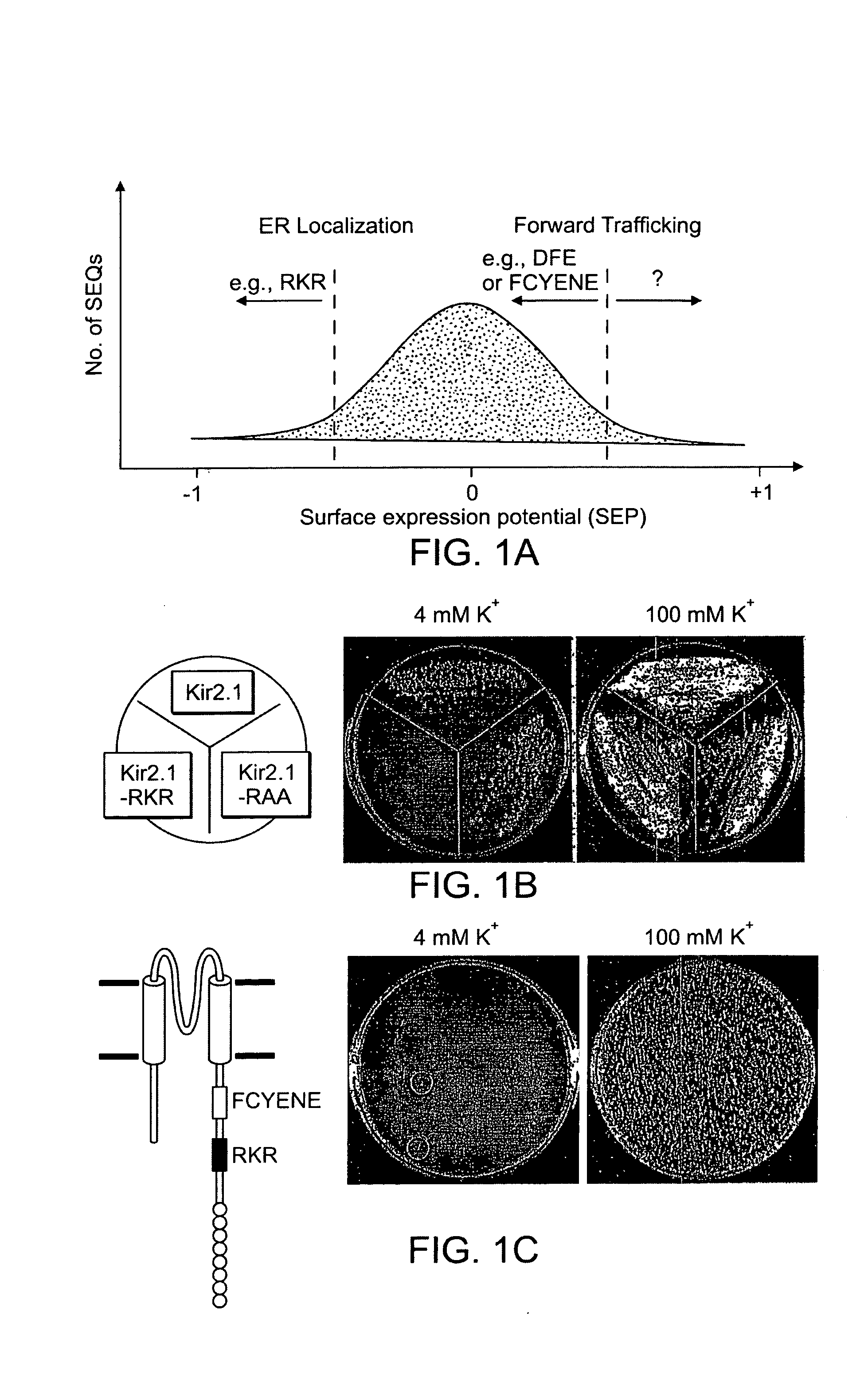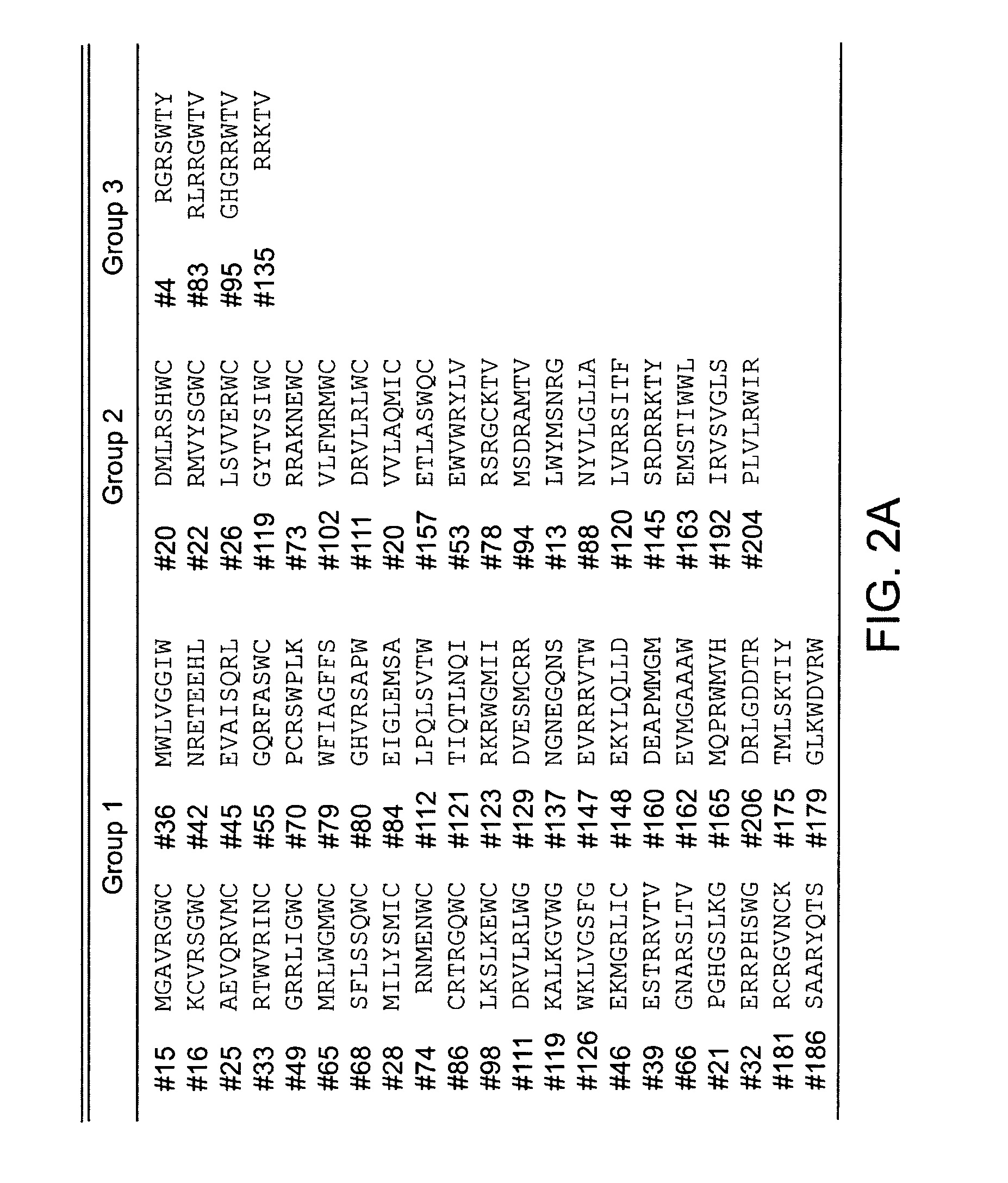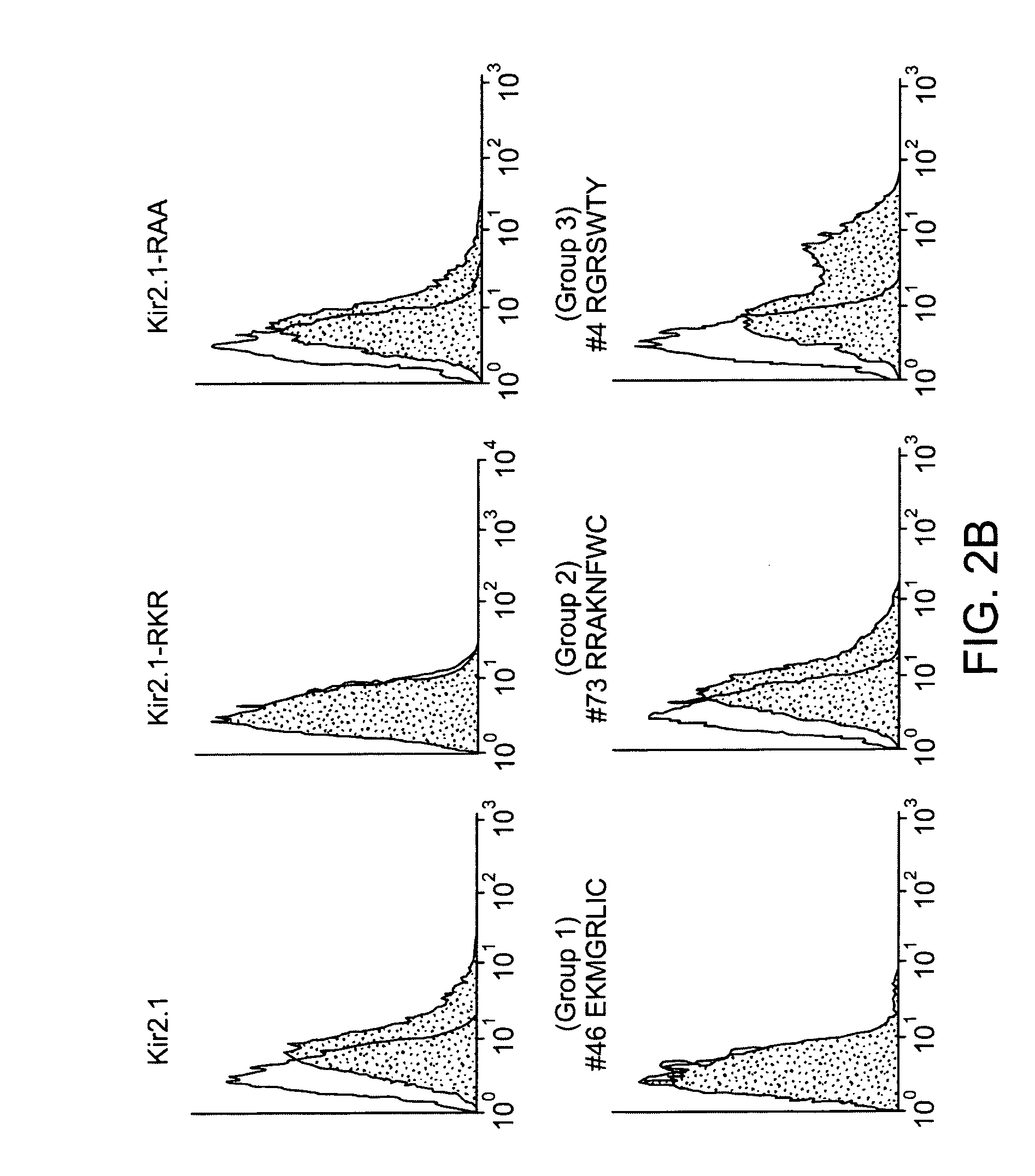Biomolecule partition motifs and uses thereof
- Summary
- Abstract
- Description
- Claims
- Application Information
AI Technical Summary
Problems solved by technology
Method used
Image
Examples
example 1
Genetic Screen for Trafficking Motifs
[0160] Within a random pool of peptide sequences, it was predicted that each would possess a certain degree of surface expression potential (SEP), which could then be assigned an arbitrary number. Within a diversity space of random amino acid sequences, one would predict a large majority of sequences would have no effects in either forward trafficking (i.e., the ability to facilitate surface expression) or retention (i.e., the ability to confer intracellular localization in ER or Golgi). Hence a plot of number of sequences against SEP value would display a large number of sequences clustered near zero (FIG. 1A). Those close to a value of +1, e.g., DXE or FCYENE (SEQ ID NO: 249) (Ma et al., 2001; Nishimura and Balch, 1997), would have strong forward trafficking potential. Conversely, those with a value close to −1, e.g., the RKR motif, would have strong retention / retrieval potential (FIG. 1A). The ability of a protein to express on the cell surfa...
example 2
Characterization of Dominant Surface Expression Signals
[0169] A. Screening of the X8 library: For screening of the X8 library, yeast were transformed with 300 μg of Kir2.1-RKR-X8 library plasmids, and approximately 2×106 clones of transformants (as estimated by growth on 100 mM KCI) were directly plated on 4 mM KCI plates. After 5 days of culture the rescued colonies were picked and further grown on separate plates for plasmid isolation. To confirm the growth dependence on the plasmid, the isolated plasmids were re-transformed to SGY1528 and tested for growth on 4 mM KCI plates. Those found to grow at 4 mM potassium were subject to retransformation. From approximately 200 clones that were confirmed for the growth upon re-transformation, the X8 sequences were analyzed. 67 distinct sequences were isolated. To identify those with activity in mammalian cells, the sequences were transferred to a mammalian cell expression vector and individually expressed via transient transfection in HE...
example 3
Interaction Between Phosphorylated SWTY (SEQ ID NO: 250) and 14-3-3 Proteins
[0177] A. Immunoprecipitation: To test whether the SWTY motif (SEQ ID NO: 250) functions by recruiting protein machinery that actively mediates the surface expression of membrane protein, HEK293 cells were transfected with a control vector, HA-tagged Kir2.1-RKR and Kir2.1-RKR-SWTY (peptide disclosed as SEQ ID NO: 251), respectively. The transfected cells were harvested, lysed and immunoprecipitated with anti-HA antibody. For immunoprecipitation, transfected cells were washed with PBS once and lysed with lysis buffer (1% NP40, 25 mM Tris, 150 mM NaCl, pH 7.50) with protease inhibitor cocktails for 20 min at 4° C. After spinning for 20 min at 11,000 g, the supernatant was mixed with protein A-conjugated agarose beads which were pre-incubated with 1 μg of anti-HA Ab or anti-14-3-3R Ab (Santa Cruz). After 5 hour incubation, the beads were washed 5 times with lysis buffer and then boiled with 2X sample buffer fo...
PUM
| Property | Measurement | Unit |
|---|---|---|
| pH | aaaaa | aaaaa |
| movement | aaaaa | aaaaa |
| protein structure | aaaaa | aaaaa |
Abstract
Description
Claims
Application Information
 Login to View More
Login to View More - R&D
- Intellectual Property
- Life Sciences
- Materials
- Tech Scout
- Unparalleled Data Quality
- Higher Quality Content
- 60% Fewer Hallucinations
Browse by: Latest US Patents, China's latest patents, Technical Efficacy Thesaurus, Application Domain, Technology Topic, Popular Technical Reports.
© 2025 PatSnap. All rights reserved.Legal|Privacy policy|Modern Slavery Act Transparency Statement|Sitemap|About US| Contact US: help@patsnap.com



